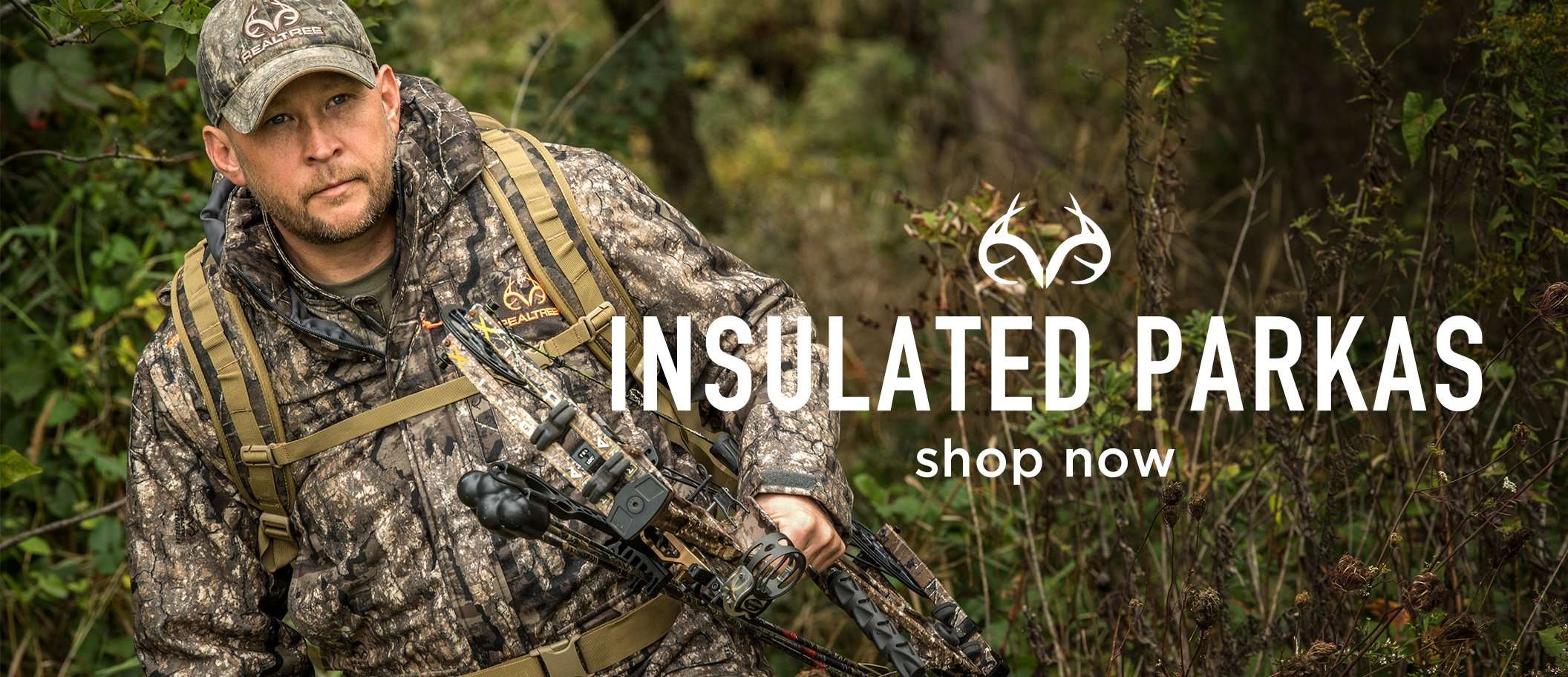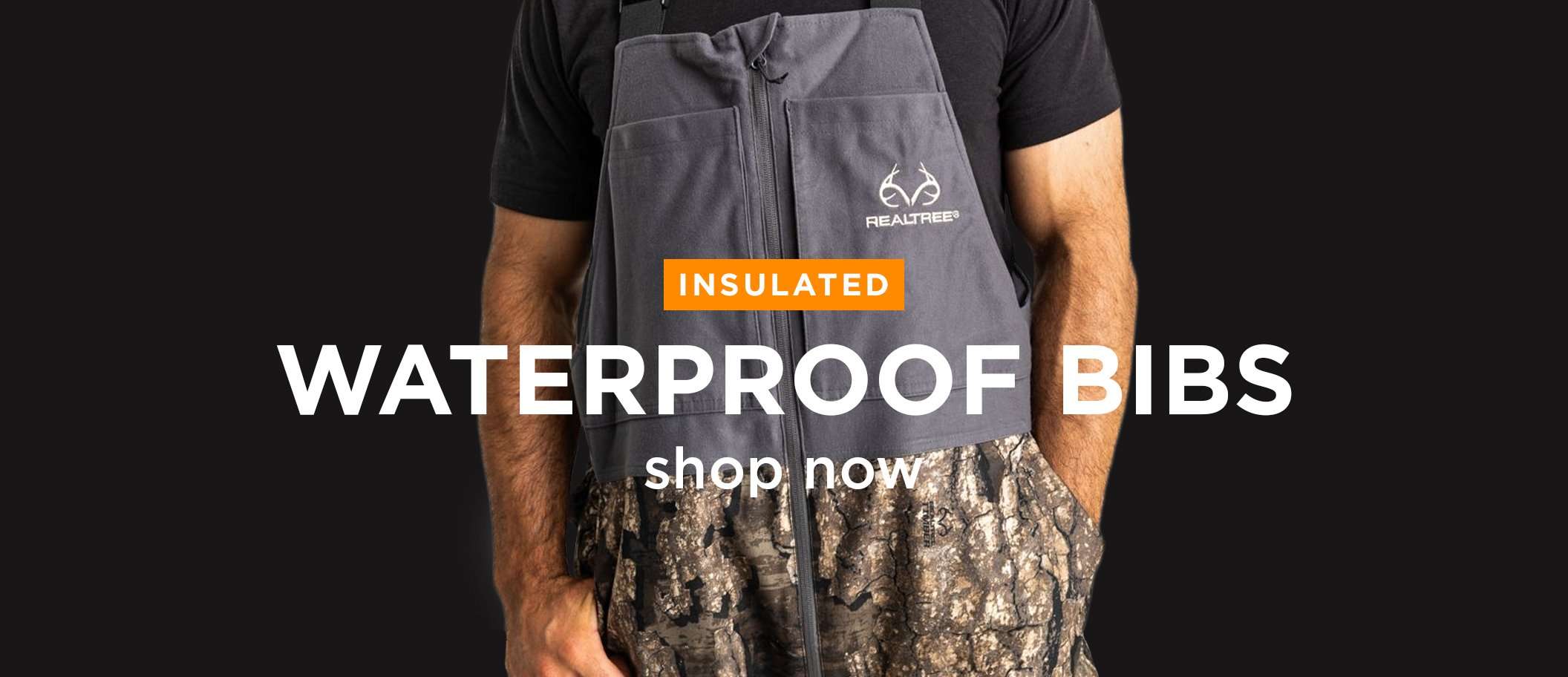Should you try a single hen, a jake and hen, or a full-strut decoy? That depends on the time of the season. Here’s your guide to using turkey decoys, from opening day to the closing bell
My nephew and I popped up a blind in a corn stubble field less than 100 yards from a turkey roost that I’d identified by listening to gobbles for the previous two mornings. We positioned an aggressive jake decoy next to a breeding hen decoy before settling in. With dim lighting hinting at dawn’s arrival, I coaxed with some tree yelps. Gobbling confirmed that the toms were in the trees right where I expected they would be.
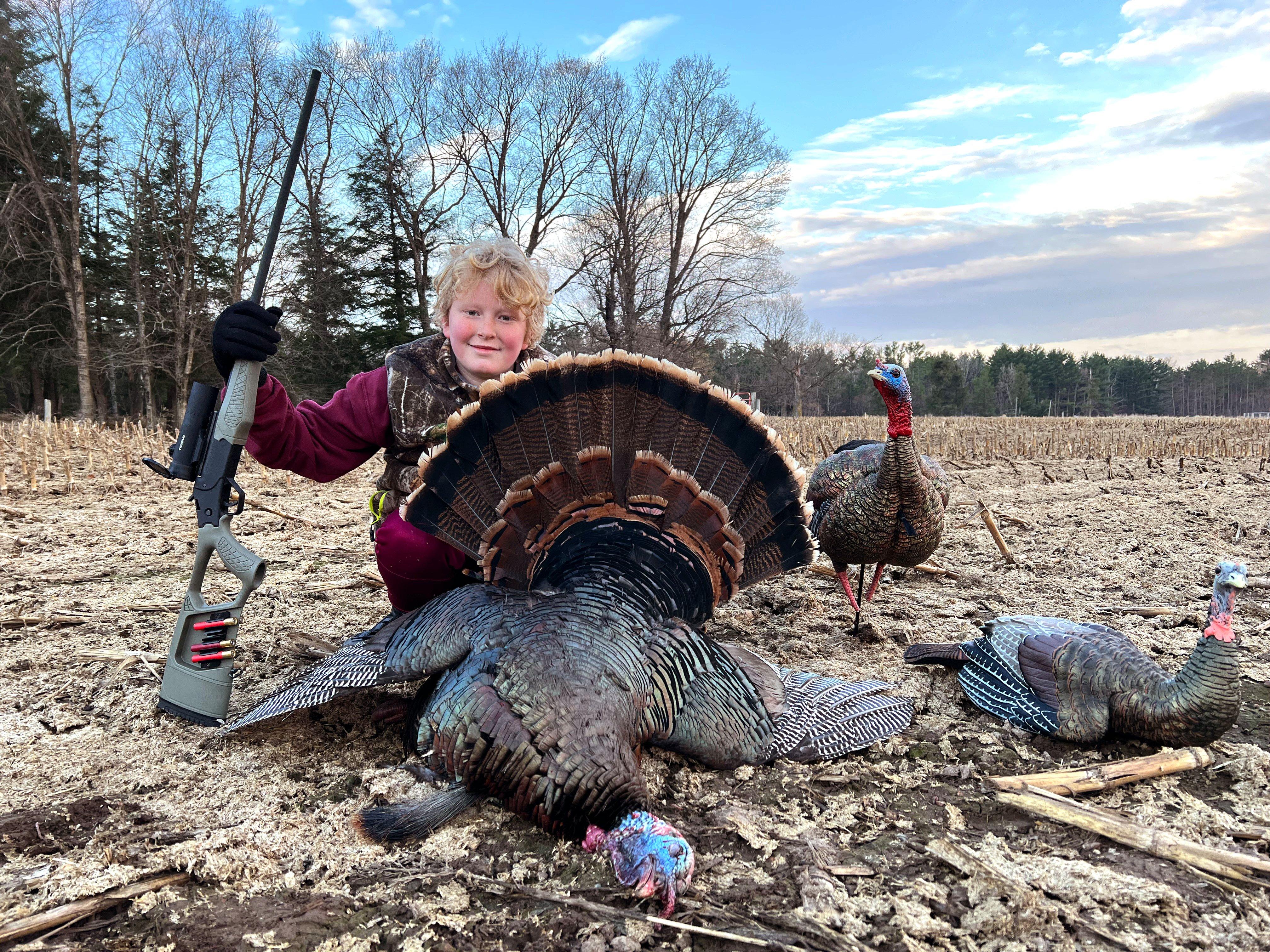
The author’s nephew bagged this big gobbler with a jake-and-hen combo. Photo by Darron McDougal
Soon, they flew down, and rather than enter the field and come to our decoys, they headed east onto the neighboring property to court some hens. I continued coaxing with my calls, but it became obvious that the gobblers wouldn’t leave the hens.
Meanwhile, another gobbler nearly 500 yards in the opposite direction began gobbling. He was out of view, and I knew he was across a paved road. “I’m going to call a lot and then stop,” I whispered to my nephew. My ploy was to build curiosity, which would draw the bird to where he’d see the decoys. Then, it would be up to the decoys to draw him within shotgun range.
***Don’t Miss: NEW STUDY SHEDS LIGHT ON TURKEY ROOST HABITS
About 10 minutes after I stopped calling, my nephew noticed a turkey about 200 yards away. I glassed with my binoculars and confirmed that it was the tom and that he was beelining toward our decoys as fast as his two legs could carry him. Soon, the puffed-up bird was pushing his breast against the jake decoy 15 yards away. When he’d pushed it over, I said, “OK, shoot him!” Boom! The bird flattened out and hardly twitched.
Whether you haven’t tried hunting with decoys or you’ve experienced minimal success with decoying, you’ve come to the right place. Here, we’ll discuss several decoy setups and when they tend to be most effective, based on my 22 years of decoying turkeys. There’s just something about fooling a mature gobbler with decoys, so let’s dive in.
THE FULL-FLOCK SPREAD
Pro: Highly effective early in the season
Con: Hassle to carry
It might be a hassle, but lugging several decoys afield can be very productive early in the season as aggression builds and winter flocks begin dividing up. Toms that have been kicked out of the big flock are roaming and looking for other turkeys to mingle with. By setting out a handful of hens and a strutter or aggressive jake decoy, you’re inviting satellite toms to join a smaller flock with one male bird (a less intimidating scene than the flock they were just booted from).
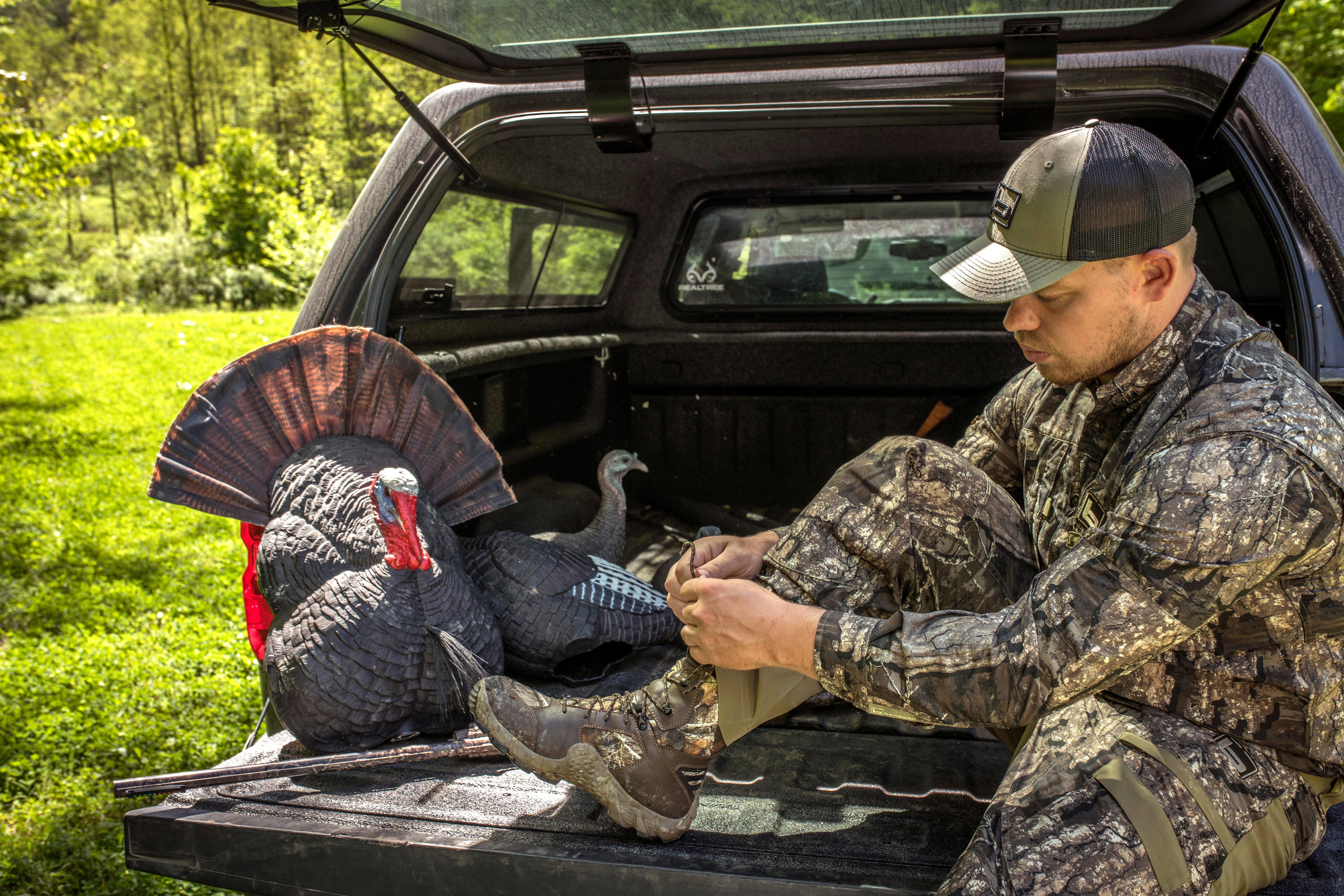
A small flock of decoys, like a jake or gobbler with a handful of hens, can trigger curious or dominant gobblers to investigate. Photo by Bill Konway
A flock of decoys has the potential to trigger three possible responses. A lone gobbler might think he’s found other birds that will allow him in. Or, he might come in purely out of curiosity to see who these birds are and size up the ring leader. Or, he might see hens guarded by only one tom or jake (your decoy) as an opportunity to establish his dominance by fighting to intercept the flock.
Smaller flocks are common once the huge winter flocks divide and disperse, so a flock of decoys is a very realistic card to play and can be highly effective during this window.
THE JAKE AND HEN CLASSIC
Pros: A standby that works all season long
Cons: Can intimidate subordinate gobblers
This go-to combo works all season, and I use it more than any other decoy spread because I’ve had so much success with it. I usually pair an aggressive 3/4 strut jake with a solo hen. The hen’s pose seems to have little to no bearing on this spread’s effectiveness; I’ve used alert, feeding and breeding hen decoys with virtually the same exact results.
As for timing, I’ve busted mature gobblers over this deadly pair as early as Nebraska’s March 25 archery opener and as late as the end of May in Wisconsin, not to mention every single week in between. If I had only one day left in my life to turkey hunt, I’d select this decoy setup, hands down, because it has produced the most consistent results.
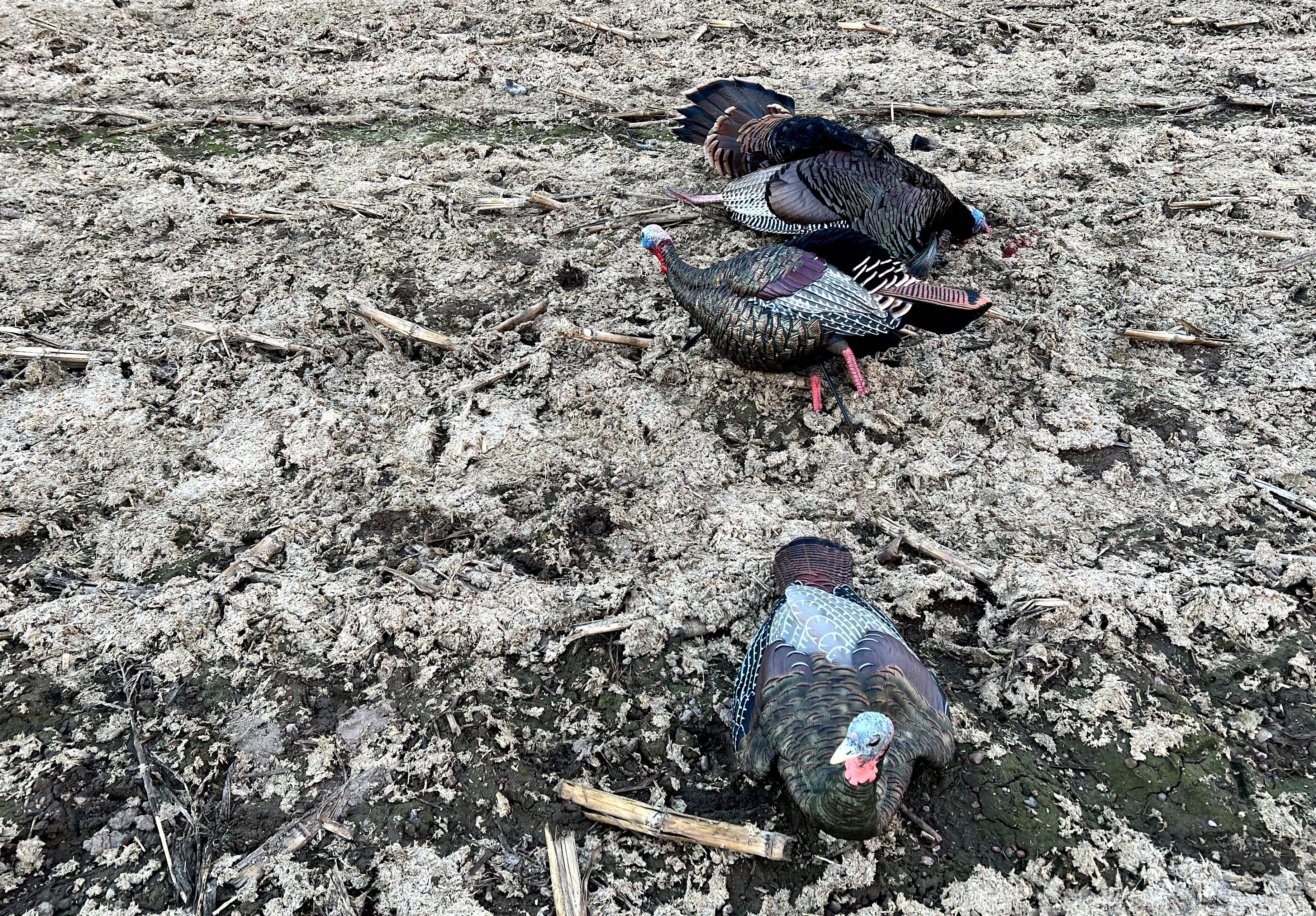
The jake and hen decoy pair is a combination that can work all season. Photo by Darren McDougal
Now, there are some instances when it doesn’t work. Case in point: Once during mid-April in Wisconsin, I had a tom gobbling from a ridge top out of view. I also could hear hens yelping, so I got mouthy with my calling. The gobbler came straight to the pinch-point I was calling from, but when he saw the jake and hen decoys, he became skittish and skirted my setup out of range. I believe he was looking to add a hen to his flock, or perhaps he thought one of his hens had fallen behind and was coming to round her up. Regardless, he didn’t want to fight.
Most of the time, the jake and hen combo produces the highest response rate, but when I encounter a bird that becomes skittish or simply doesn’t commit, I’ll usually skip the jake on my next attempt to hunt that bird and try one or two hen decoys.
THE SOLO JAKE
Pros: Easy to carry, still elicits dominance response
Cons: Some satellite birds don’t want to fight, period
If you want to elicit a similar response to the jake and hen combo while reducing weight for easier transportation, a great option is to carry a solo jake decoy. The key, though, is an aggressive pose and stunning realism. Don’t use an alert jake with a moderately red head or one that looks fake. It has to look like an overconfident punk with a beaming red head.
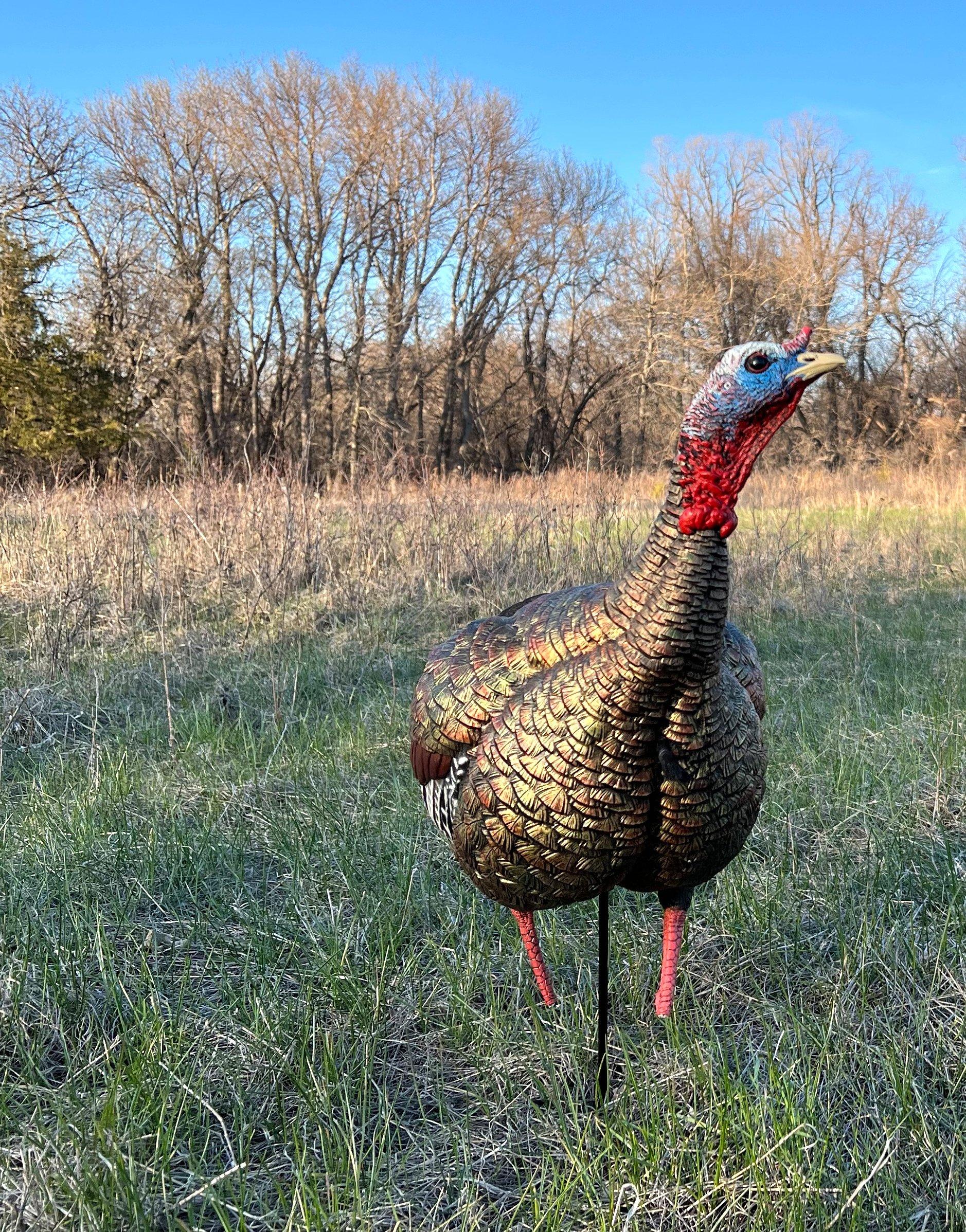
A solo jake is easy to transport and works well early in the season. Image by Darron McDougal
I suggest using this one during the early season while hunting hen flocks guarded by two or more gobblers. Hunt as close to where they fly down, or where they go after they fly down, as possible. There is strength in numbers, and two or more gobblers are likely to gang up on this intruder and kick him out of the area and away from the hens, bringing a gobbler or several of them into your sights.
***Don’t Miss: 10 OLD-SCHOOL TURKEY HUNTING TIPS
It can also work when you’re hunting a henned-up tom, usually during the middle of the season. If you’ve been sitting a couple hundred yards away with hen decoys or even the jake and hen combo and trying to call a tom away from his hens with zero success, try pushing the envelope by getting into his wheelhouse with an aggressive solo jake. The last thing he wants is a little punk getting near his ladies. Expect him to either come in hot or gather up his hens and push them away. The key, I’ve found, is to hunt right where they already hang out, not 50 or 60 yards away. The goal is to push his dominance button. Getting close and posing a threat can do it.
THE SOLO HEN
Pros: Subtle presentation where gobblers have been pressured or where large jake flocks live; can trigger a dominance response from hens
Cons: May not trigger a response from henned-up gobblers
Have you ever witnessed an all-out turkey fight? It can be a bloodbath. Some toms have lost a battle or several of them. They’ve gotten absolutely rocked by their opponents, and they need some time to shake it off. Also, subordinate gobblers or even dominant toms that have been pestered by jake flocks don’t always want to fight, especially when it’s one tom versus three or more jakes. So, if you’ve encountered loud gobblers that tuck tale and run upon seeing your jake or strutter decoy, consider a non-aggressive single-hen setup.
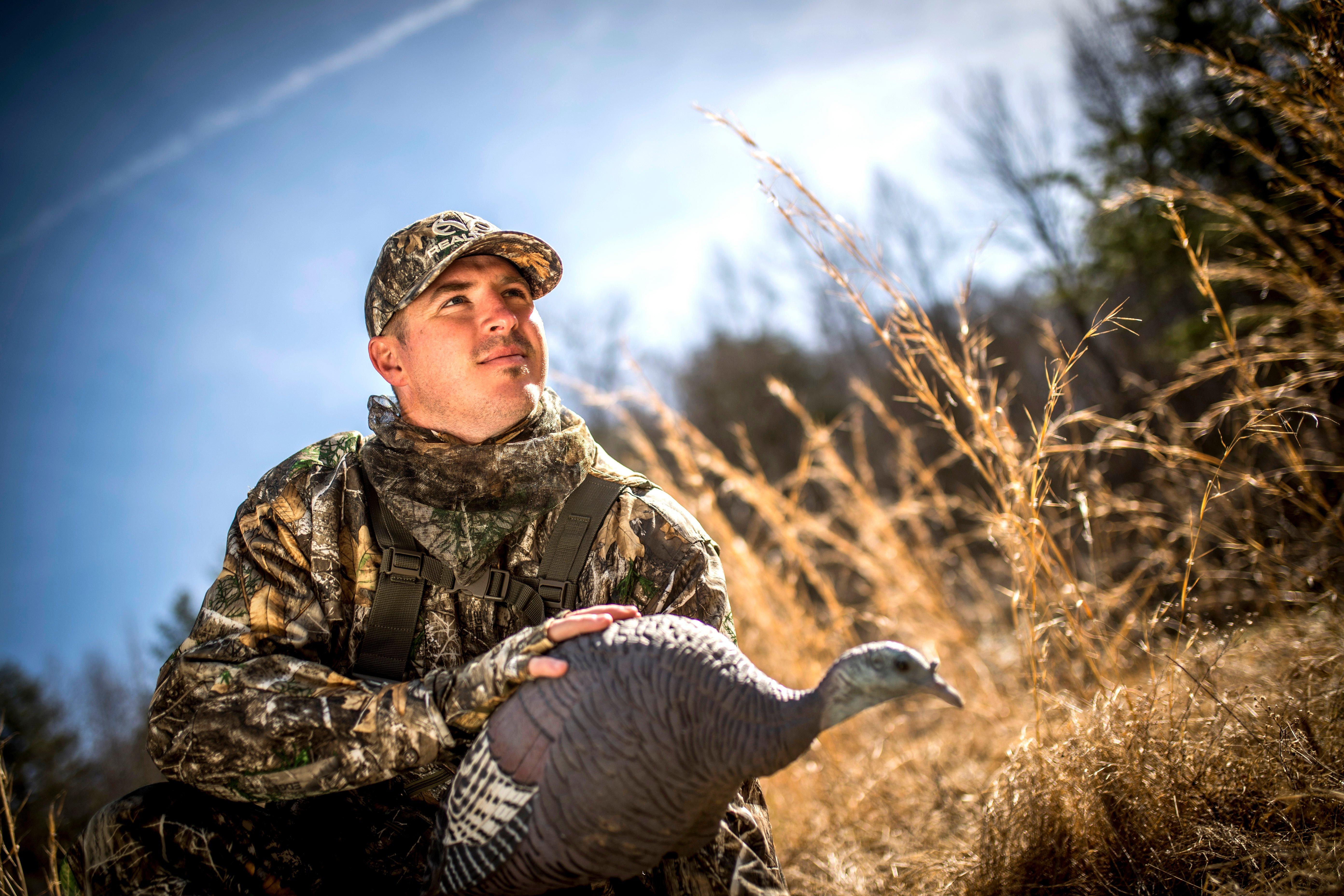
A solo hen decoy works well from mid to late season and is attractive to both toms and aggressive hens. Image by Bill Konway
A solo hen can be highly alluring to a tom that wants a hen but has no fight left in him. This is a good card to play during the middle to end of the season and especially toward the end. My favorite solo-hen setup is when I’m hunting a flock with one tom and several hens, especially when a jake decoy hasn’t triggered a response. I’ve found that live hens often become aggressive toward a solo hen that they don’t recognize. Numerous times I’ve had hens come in fast, purring and cutting the entire way to the decoy. Then, they attack it. I’ve had hens peck the head of my decoy and shove it around. And you know what? The tom can’t stand it. Often, he runs right in to see what the ruckus is about.
FANNING
Pros: Highly effective on aggressive gobblers
Cons: Potentially dangerous, illegal in some areas, can put added pressure on local birds
Stalking a gobbler and then challenging him with a real turkey fan or even a strutter decoy is not only a controversial tactic, but it’s also illegal in several states. Still, I occasionally use this tactic (where legal) and have outstanding success. The most effective situation is to move to within 80-100 yards of a flock guarded by one or more gobblers. When I’ve done it, I slowly present the fan, then move it to add realism. If the tom(s) don’t notice it or is (are) looking but not coming closer, I sometimes make a few tom/jake yelps with my mouth call or the spitting noise of a tom’s spitting and drumming.
Fanning can be effective at any time of the season, but you also must understand that not every tom will accept the challenge. Some will go on alert and move their hens the other way.
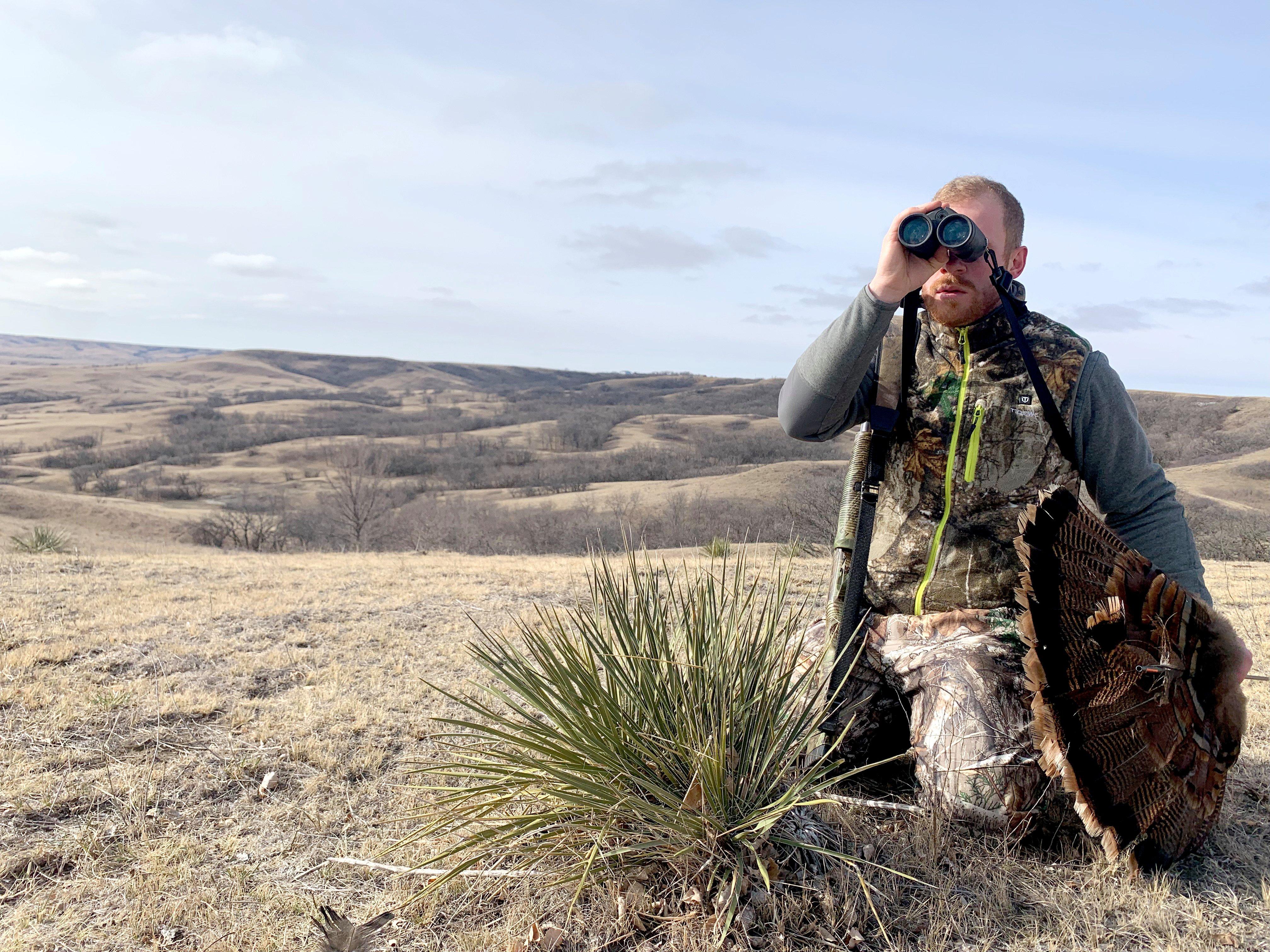
Where legal and safe, fanning can be a deadly way to bring in a gobbler that hangs up out of range. Image by Darron McDougal
Like fanning, any type of turkey decoying has risks. You’re sitting within shotgun range of what look like real turkeys. Although most hunters can tell the difference in a quick glance, accidents can happen. So, always use caution and be alert. If you see another hunter moving in on your setup, remain motionless and speak loudly, “Hunter over here!” Repeat until your warning is understood and the hunter realizes that your decoys aren’t real turkeys.
Although calling a tom in close without decoys and killing him at 30 yards is an art, nothing beats the rush of a boss gobbler storming in on a decoy setup, especially when he beats up your jake decoy before you shoot him. Although every gobbler is different and there is no guarantee how they’ll respond to decoys 100 percent of the time, these guidelines will certainly point you in the right direction this spring.



